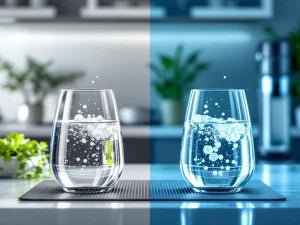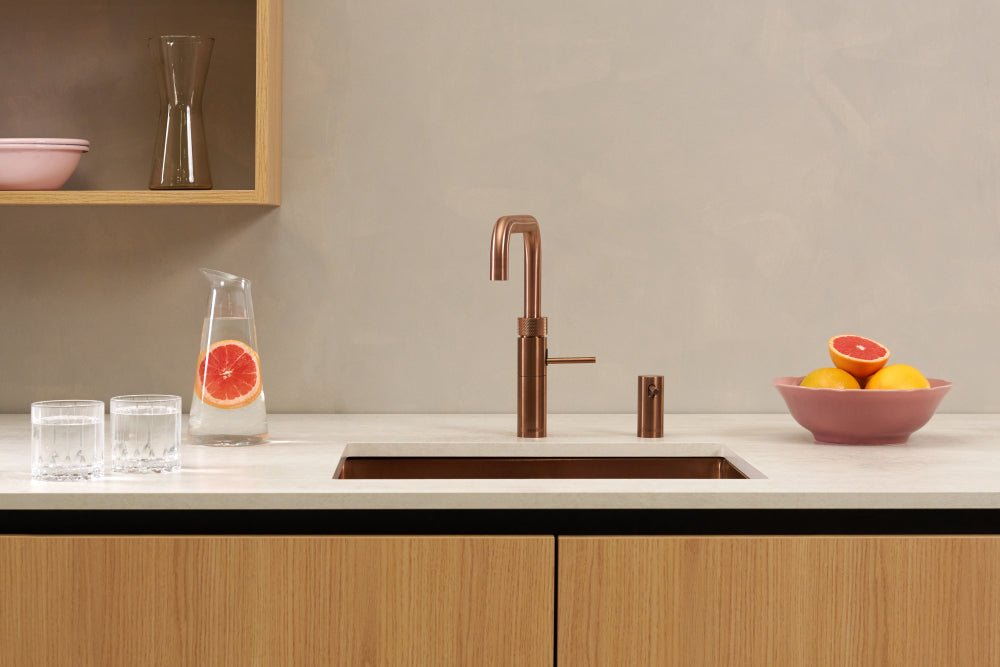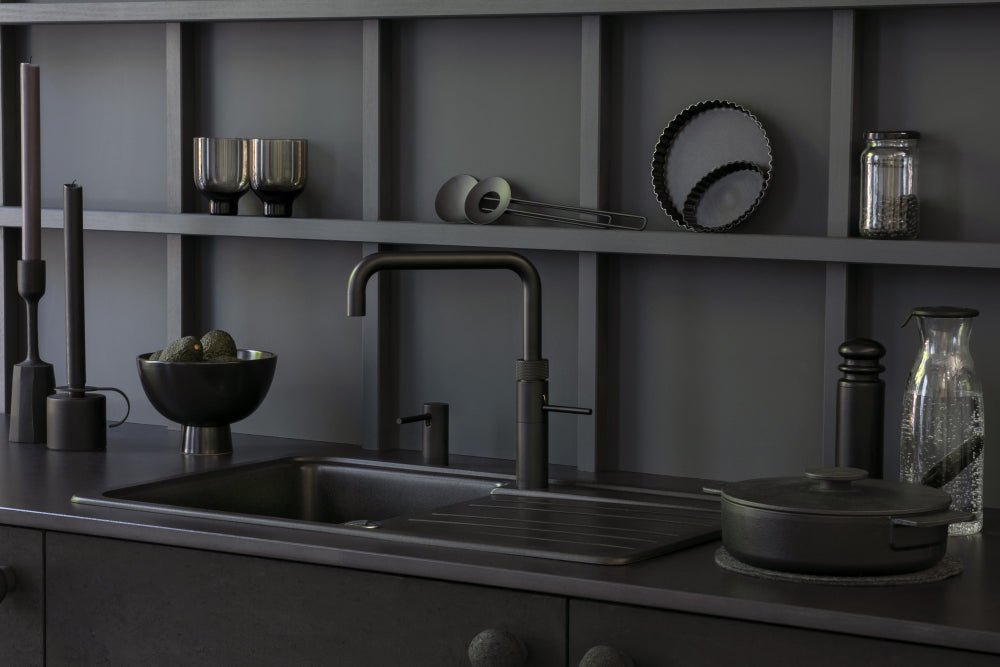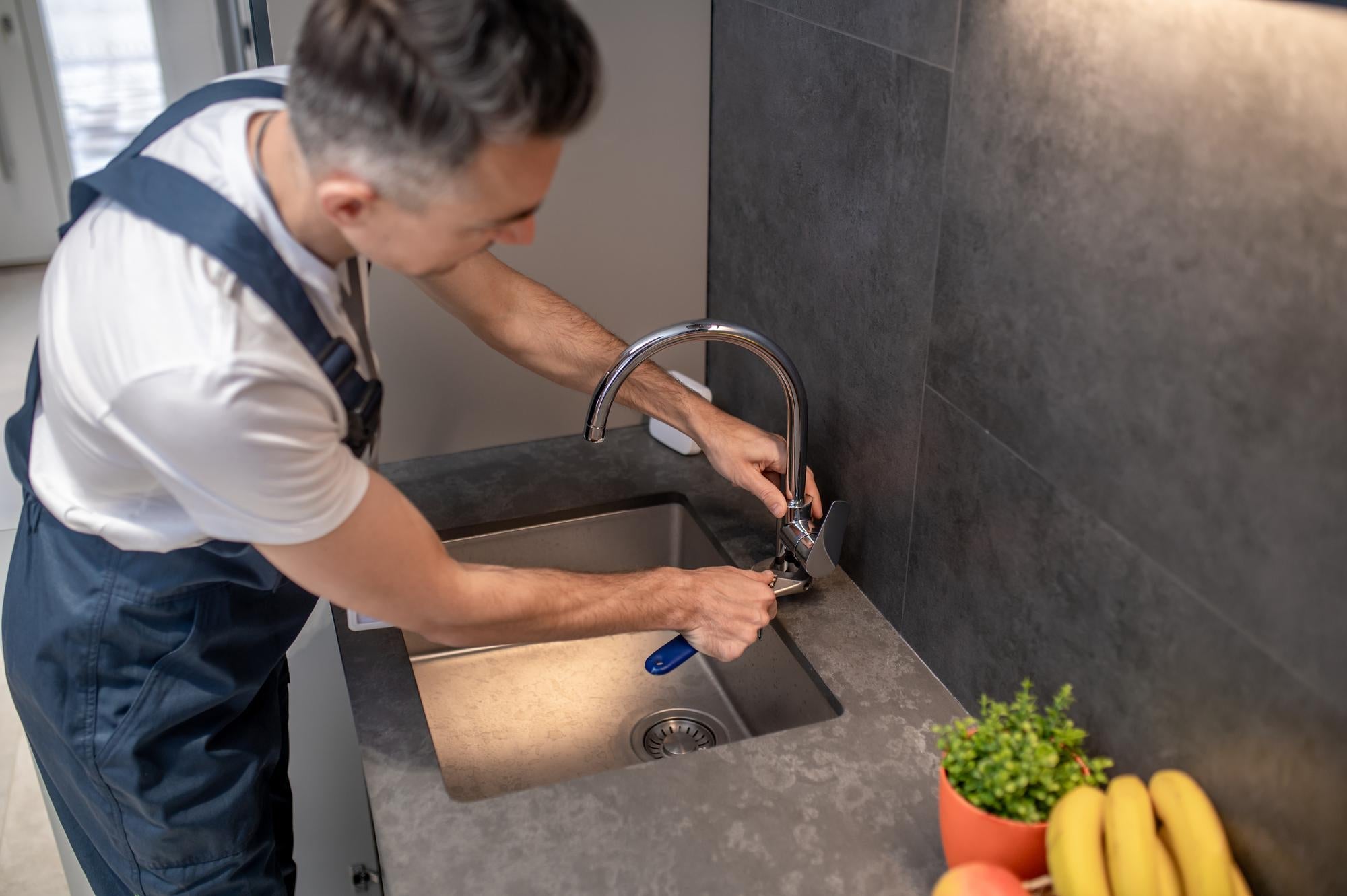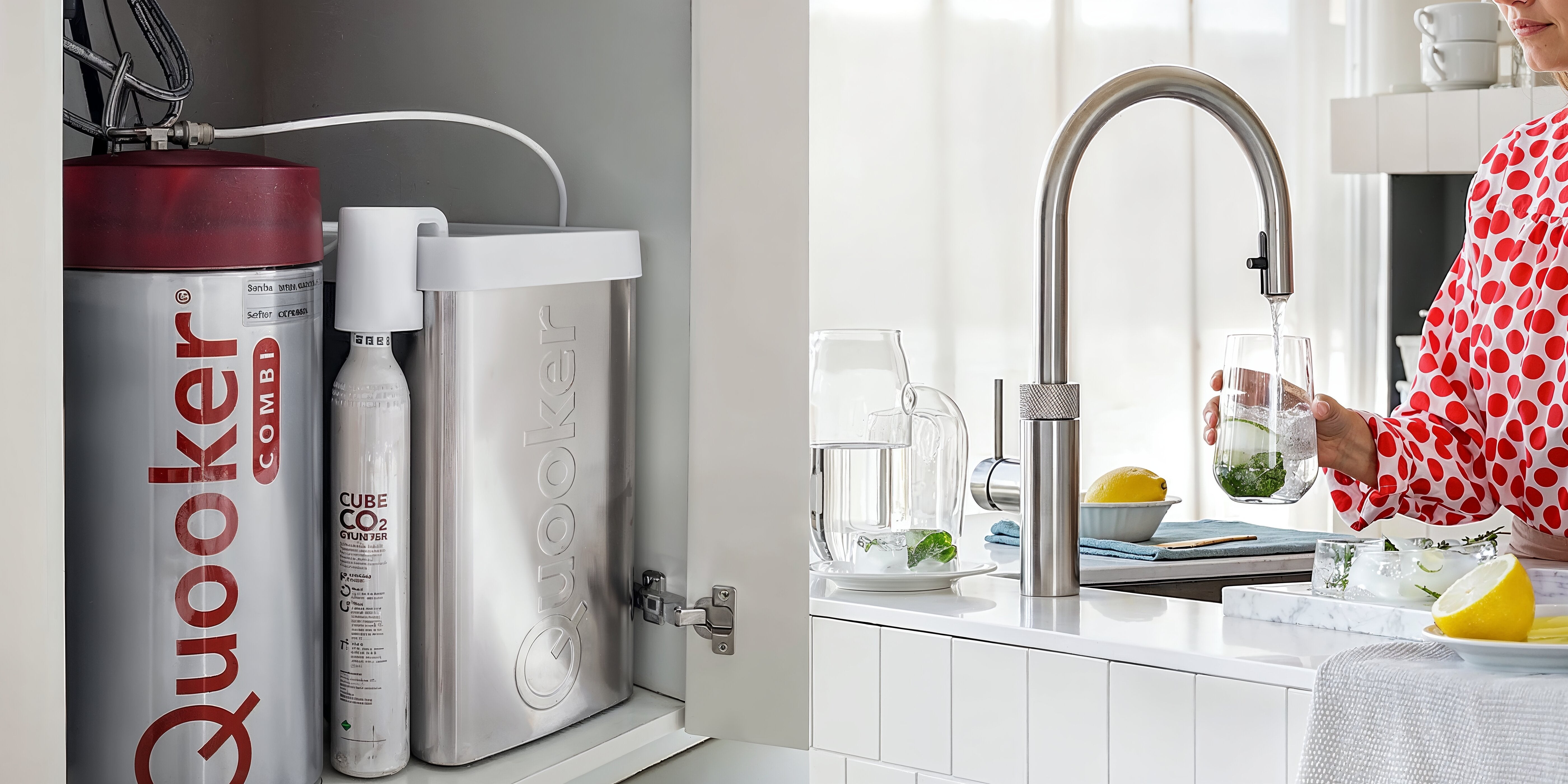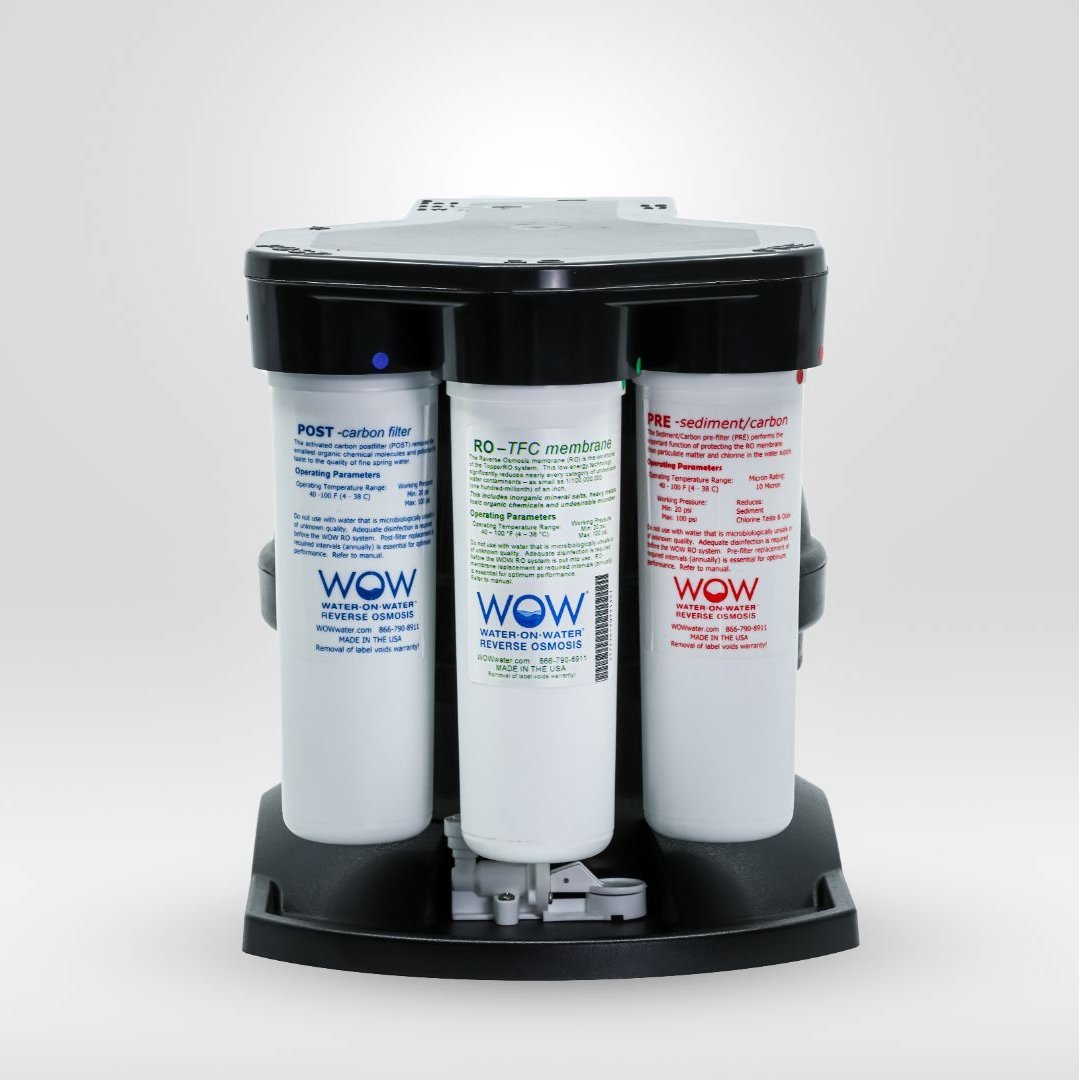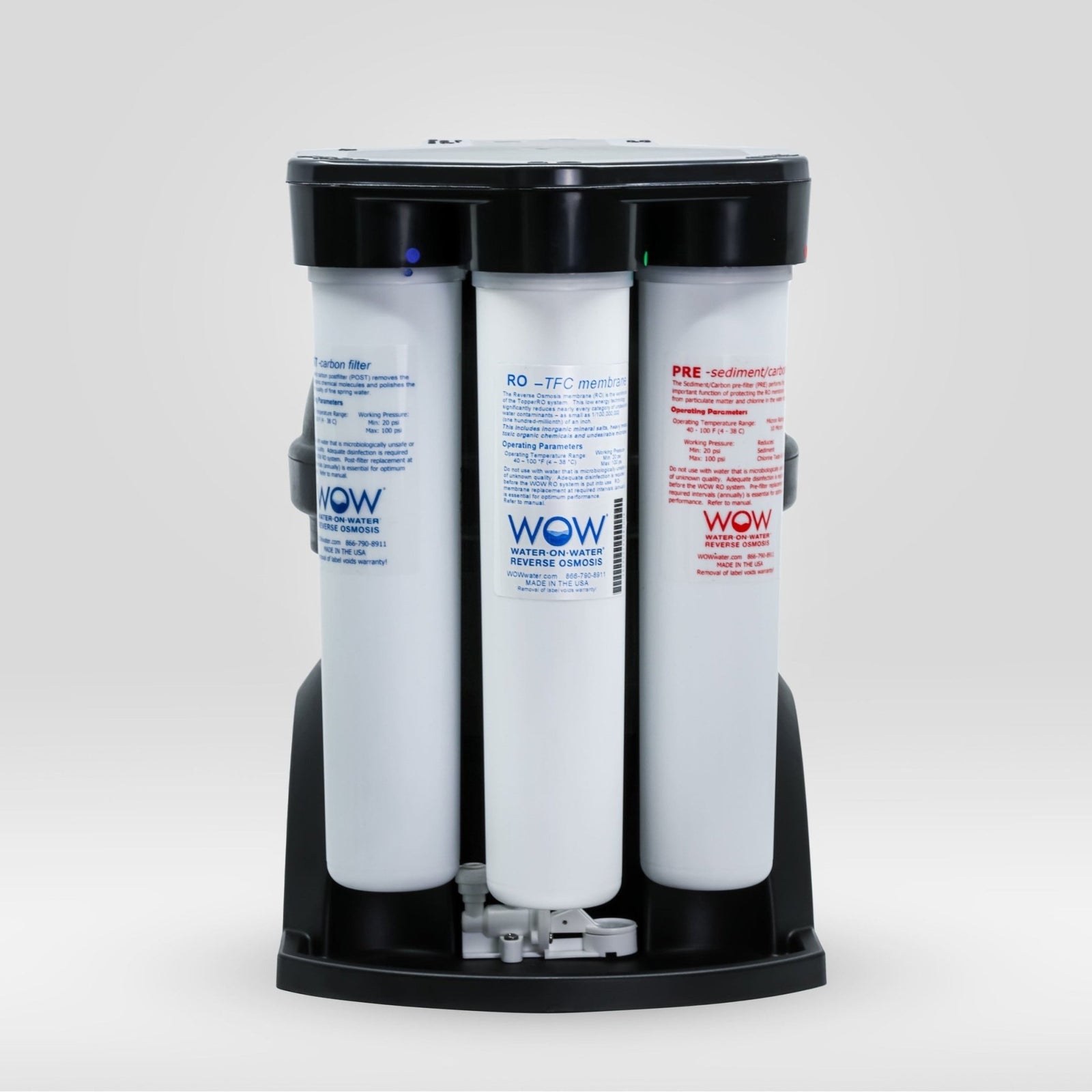Tap water that leaves spots on glasses is caused by dissolved minerals like calcium and magnesium, which form visible white deposits after evaporation. These limescale stains occur primarily in hard water areas, where the mineral concentration is higher. The solution lies in removing these minerals before the water reaches the tap, with reverse osmosis water filtration technology eliminating up to 99% of the culprits.
Why does my tap water leave stains on glasses?
The frustrating problem of water spots on glasses is familiar to almost every household. You wash your glassware carefully, perhaps even drying it with a tea towel, but white spots and streaks still appear as soon as the glass dries. These stubborn deposits make your beautiful glassware dull and look unkempt, despite all your cleaning efforts.
This common problem is directly related to the composition of our tap water. In the Netherlands, drinking water is extracted from groundwater, surface water, and a small amount of dune water. During this natural process, the water dissolves various minerals from the soil, including calcium and magnesium. These minerals aren't harmful in themselves, but they do cause those annoying stains on your glassware.
The severity of the problem varies by region. In areas with harder water, where the mineral concentration is higher, the stains are more prominent. This explains why some households experience more limescale than others, even within the same municipality.
What causes those white spots on my glassware?
The white spots on glass are caused by a simple physical process. When tap water evaporates, dissolved minerals like calcium and magnesium remain on the glass surface. These minerals were invisibly dissolved in the water, but become visible once the water evaporates.
The process works as follows:
- Water naturally contains dissolved minerals from the soil
- When drying, water (H₂O) evaporates
- The minerals cannot evaporate and remain behind
- These minerals form a thin, white layer on the glass
- The more minerals in the water, the thicker the deposit
Water hardness in the Netherlands varies considerably by region. In areas with calcareous soil, the hardness can reach up to 14°dH (German hardness levels), while other areas have only 4°dH. These differences explain why some households rarely experience limescale stains, while others struggle daily with white residue on their glassware.
How can I prevent water spots on glasses?
There are several practical methods to minimize staining on glassware. The most direct approach is to dry glasses immediately after washing. By not allowing the water to evaporate, you prevent minerals from remaining on the surface.
Effective prevention methods include:
- Dry immediately with a clean, lint-free cloth
- Using rinse aid in the dishwasher
- Wash with hot water (minerals dissolve better)
- Rinse with distilled water
- Adding vinegar to the final rinse water
For a permanent solution, you can address the problem at the source by applying water filtration . By removing minerals before the water reaches the tap, you completely eliminate the cause of limescale stains. Modern home water filtration systems use advanced technologies like reverse osmosis to remove up to 99% of dissolved solids from tap water, allowing your glassware to dry naturally spot-free.
Does a water filter work against limescale stains on glassware?
Water filters vary widely in their effectiveness against minerals that cause limescale. Standard carbon filters, such as those used in water jugs, primarily improve taste and odor but hardly remove calcium and magnesium. To actually eliminate these minerals, more advanced technology is needed.
Reverse osmosis systems are the most effective against limescale. This technology forces pressurized water through a semi-permeable membrane so fine that it retains up to 99% of dissolved minerals. The result is virtually pure water without the minerals that cause stains.
| Filter technology | Effectiveness against limescale stains | Mineral removal |
|---|---|---|
| Carbon filter | Minimum | 5-10% |
| Ion exchanger | Good | 70-85% |
| Reverse osmosis | Excellent | 95-99% |
The difference between filtered and unfiltered water when cleaning glassware is immediately apparent. Glasses washed with water from a reverse osmosis system dry without any staining, while the same glasses washed with tap water show white rings and streaks. This makes water filtration not only practical for drinking water but also ideal for household tasks where spotless results are required.
Key solutions for spot-free glassware
The most effective approach for spot-free glassware combines immediate action with long-term solutions. For immediate results, drying immediately after washing remains the fastest method. Use a clean, lint-free microfiber cloth for best results.
However, water quality is the foundation for truly spot-free glassware. When you use high-quality water with minimal mineral concentrations, stains are naturally prevented. This means that investing in home water purification not only improves your drinking experience but also simplifies the maintenance of your glassware.
In summary, the main solutions are:
- Direct solutions: drying, rinse aid, correct temperature
- Temporary remedies: vinegar, citric acid for existing stains
- Structural approach: water filtration with reverse osmosis technology
- Preventive maintenance: regular descaling of equipment
For households that struggle with limescale stains daily, a whole-house water filter system offers the most complete solution. Not only will your glassware benefit, but your coffee maker, kettle, and other appliances will also stay free of limescale for longer. The investment in water purification pays for itself with less cleaning time, a longer appliance lifespan, and the daily enjoyment of crystal-clear glassware without any hassle.
